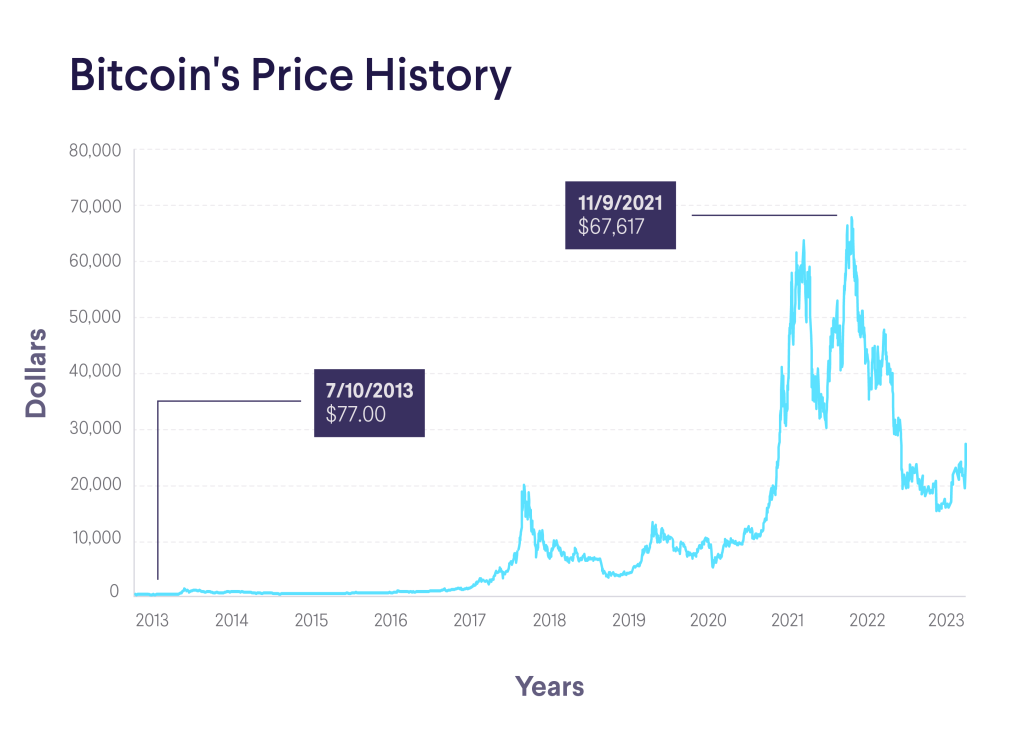The financial world is changing at breakneck speed, and investor attitudes are evolving alongside it. Bitcoin, the first digital currency with global reach and independence from central banks, has experienced remarkable growth and development over the years. It’s becoming a more sophisticated investment tool, but the question of whether to classify it as a risky asset still sparks heated debate among traditional investors.
For those accustomed to the stability and predictability of stock and bond markets, Bitcoin’s volatility can be daunting. The price of this cryptocurrency can fluctuate dramatically in a short period, making it unpredictable and potentially dangerous for investors with low-risk profiles. Additionally, the cryptocurrency market remains largely unregulated, opening doors for scams and price manipulation.

On the other hand, Bitcoin also offers unique properties that make it attractive to investors seeking alternatives to traditional assets. Its decentralized nature, free from control by a central authority, reduces the risk of systemic failures and makes it more resilient to external influences. Bitcoin has also proven resilient even during turbulent times, with a price that has always managed to climb back above previous lows. Furthermore, the total supply of Bitcoin is capped at 21 million coins, creating a deflationary model and offering protection against inflation.
More and more institutional investors, such as hedge funds and pension funds, are entering the Bitcoin market. This could lead to greater price stability and wider adoption, thereby diminishing its perception as a risky asset. The constant development of blockchain technology and innovative applications for Bitcoin could further decrease its risk profile and enhance its appeal to investors in the future.
Macroeconomic factors, such as interest rates and inflation, influence the price of Bitcoin. Investors should monitor these factors and their impact on the cryptocurrency market, as they could affect the volatility and overall riskiness of Bitcoin as an investment.
Conclusion:
Bitcoin is becoming a more complex investment tool with unique characteristics and risks. Its classification as a risky asset depends on an investor’s individual perspective and consideration of various factors such as volatility, regulation, technical complexity, decentralization, global accessibility, limited supply, institutional interest, technological development, and macroeconomic conditions. Before investing in Bitcoin, it’s crucial to conduct thorough research and weigh all relevant factors.
Important Disclaimer: This is not investment advice. Investors should conduct their own research before investing in any assets, including Bitcoin.
Bitcoin Price History by Year
| Bitcoin Price History by Year (2014-2022) | ||
| Year | High | Low |
| 2014 | $457.09 | $289.30 |
| 2015 | $495.56 | $171.51 |
| 2016 | $979.40 | $354.91 |
| 2017 | $20,089.00 | $755.76 |
| 2018 | $17,712.40 | $3,191.30 |
| 2019 | $13,796.49 | $3,391.02 |
| 2020 | $29,244.88 | $4,106.98 |
| 2021 | $68,789.63 | $28,722.76 |
| 2022 | $48,086.84 | $15,599.05 |
| 2023 | $16,674 | $24,895 |

